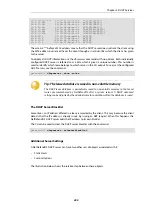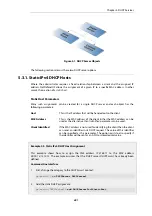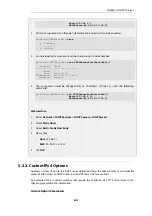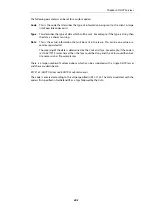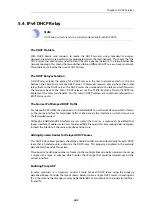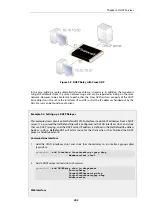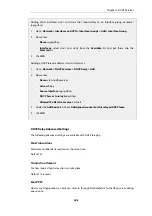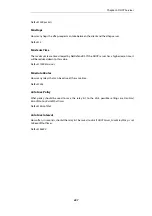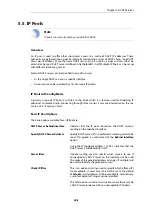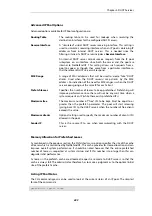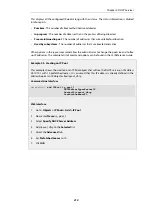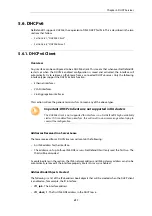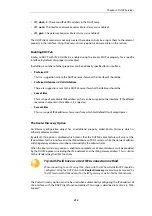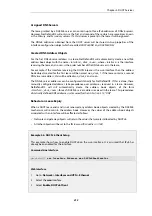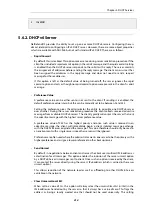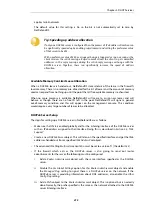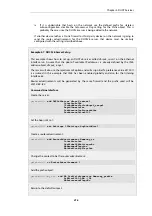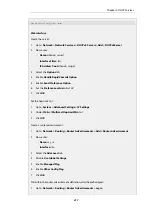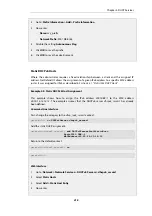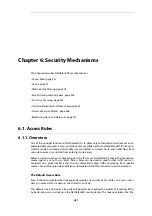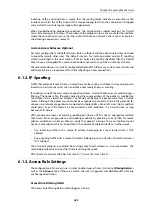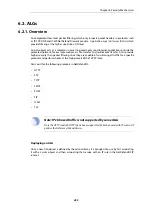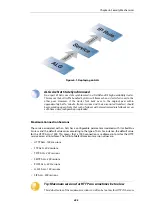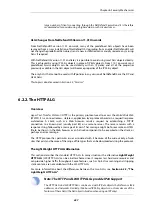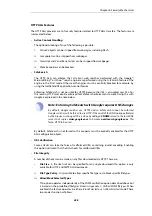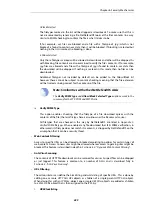
4.
Click OK
5.6.2. DHCPv6 Server
NetDefendOS provides the ability to set up one or more DHCPv6 servers. Configuring these is
almost identical to configuring an IPv4 DHCP server. However, there are some object properties
which are available with DHCPv6 but not with standard IPv4 DHCP. These are as follows:
•
Rapid Commit
By default this is disabled. This option makes sense during server solicitation procedure. If the
client has included a rapid commit option in the solicit message and the rapid commit setting
is enabled then the DHCPv6 server responds to the solicit with a reply. The server commits
the assignment of addresses before sending the reply message. The client can assume it has
been assigned the addresses in the reply message and does not need to send a request
message for those addresses.
If this option is left at the default value of being turned off, the server ignores the rapid
commit option and acts as though no rapid commit option were present in the client's solicit
message.
•
Preference Value
A preference value can be either sent or not sent to the client. If sending it is enabled, the
default preference value is zero but this can be manually set to be between 0 and 255.
Setting the preference gives the administrator the ability to prioritize one DHCPv6 server
over another. During the server solicitation procedure the client collects received advertise
messages from available DHCPv6 servers. The client typically will contact the server that sent
the advertise message with the highest server preference value.
A preference value of 255 has the highest priority and once such value is received in an
advertise message, the client will immediately begin a client initiated message exchange
with the DHCPv6 Server originated the message. This value therefore should only be used in
an environment with a single server since other servers will be ignored.
Preferences are often used where the administrator wants one server to be the primary with a
higher preference and assigns a lower preference to other backup servers.
•
Send Unicast
By default, in negotiations between client and server, the client uses multicast IPv6 address as
a destination for all messages. This option enables the inclusion of the server unicast option
by a DHCPv6 Server in messages sent to client. Once such an option is received by the client,
it can contact the server directly using the server's IPv6 address (which is carried in the server
unicast option).
This allows reduction of the network load as well as offloading to other DHCPv6 Servers
available on the network.
•
Clear Universal Local Bit
When set to a value of
Yes
, this option will always clear the
universal/local bit
(u/l bit) in the
IPv6 addresses handed out by the server so that it always has a value of zero. This flags the
address as being a locally created one that should not be used universally. This setting
Chapter 5: DHCP Services
414
Summary of Contents for NetDefendOS
Page 30: ...Figure 1 3 Packet Flow Schematic Part III Chapter 1 NetDefendOS Overview 30 ...
Page 32: ...Chapter 1 NetDefendOS Overview 32 ...
Page 144: ...Chapter 2 Management and Maintenance 144 ...
Page 284: ...Chapter 3 Fundamentals 284 ...
Page 392: ...Chapter 4 Routing 392 ...
Page 419: ... Host 2001 DB8 1 MAC 00 90 12 13 14 15 5 Click OK Chapter 5 DHCP Services 419 ...
Page 420: ...Chapter 5 DHCP Services 420 ...
Page 573: ...Chapter 6 Security Mechanisms 573 ...
Page 607: ...Chapter 7 Address Translation 607 ...
Page 666: ...Chapter 8 User Authentication 666 ...
Page 775: ...Chapter 9 VPN 775 ...
Page 819: ...Chapter 10 Traffic Management 819 ...
Page 842: ...Chapter 11 High Availability 842 ...
Page 866: ...Default Enabled Chapter 13 Advanced Settings 866 ...
Page 879: ...Chapter 13 Advanced Settings 879 ...

